Through Fire, Flood, and Rubble: The Henry Box & Son Collection
By India Dixon, Librarian, Queensland Memory | 5 April 2022
Sometimes State Library receives collections through the most unconventional of circumstances.
That is certainly the case for this latest acquisition, donated by a Brisbane-based demolitions company alongside several other collections of Queensland historical materials. Salvaged from the interior walls of a severely fire-damaged building, the Henry Box and Son Ledger and Receipt Books are some of Queensland's earliest business records held in State Library to date.
Henry Box and Son was a coachmakers and saddlery supplies business located at 104 Edward Street in Brisbane City. Henry's son, William Draper Box, migrated to Australia as a child and was educated in Melbourne. He moved to Queensland in 1862, aged 21, to establish the Brisbane branch of his father's saddlery firm. Henry Box and Son were operating in Edward Street as early as 1862, acting as importers and ironmongers in addition to their coach-making. Their earliest mention in Queensland newspapers is a classified advertisement in 1863, requesting applications for a general hand to work in the business.
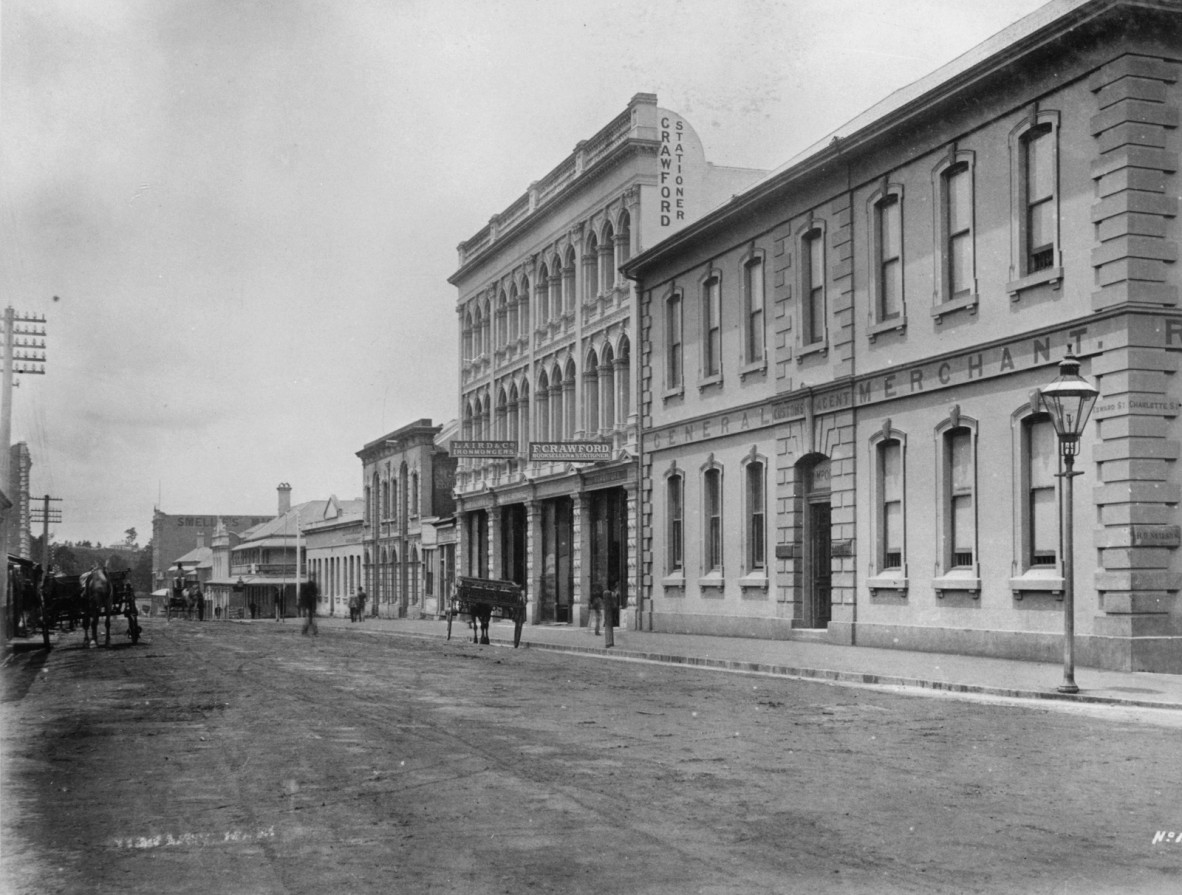
City view looking east from the intersection of Charlotte and Edward Streets, Brisbane, 1889, John Oxley Library, State Library of Queensland
In the following decades, numerous newspaper announcements were made relating to the importation side of their business. These announcements are all available for public research through Trove. Each importation announcement provides detailed insight into the kinds of materials requested and required for the functioning of the emerging population of Brisbane, and its surrounding pioneer communities. Henry Box and Son imported everything from cart axles for their own business to confectionery and alcohol for clients. Over the course of their operations, Henry Box and Son were also chosen for several annual government supply tenders, providing leather goods to the government sector.
Though William left the business in 1886, it continued to operate in Edward Street for over a decade. The building's lease was taken over by another ironmonger's firm named Brace Windle Blythe & Co. in 1897.
Providing coaches and equestrian supplies to the Brisbane community was not always a mundane task. One particular article, published in 1888, tells of a man named Walter Donaldson who was test-driving one of Henry Box & Co.'s carts prior to purchase when the horse bolted. Donaldson was thrown from the coach and fell beneath its wheels, but the vehicle continued forward without its driver, turning from George Street up onto Ann and then left onto Roma Street. In Roma Street the cart hit a post, but continued forward until it reached the train station and the horse was subdued by railway workers. The horse and cart travelled almost 2 kilometres through the busy Brisbane city centre without its driver. Luckily, neither the horse nor Mr. Donaldson was seriously injured, though the cart was significantly damaged by the collision. A look through the receipt book from 1888 does not seem to reveal a purchase order from Mr. Donaldson; perhaps he was turned off the concept of horse-based transport altogether by his unfortunate experience.
William Draper Box was a highly visible public figure in Brisbane throughout his life, and was elected to join the Queensland Legislative Council in 1874; a position that was held for a lifetime. When he departed from Henry Box & Co. in 1886, he took up a position as the manager of the Brisbane branch of the Union Trustee Company. He is also notable for commissioning the construction of the heritage listed Baroona House at Paddington. This image of the house, taken in 1886, features a man splayed leisurely across the front gardens of the property. This image is likely one of two remaining images of William Box.
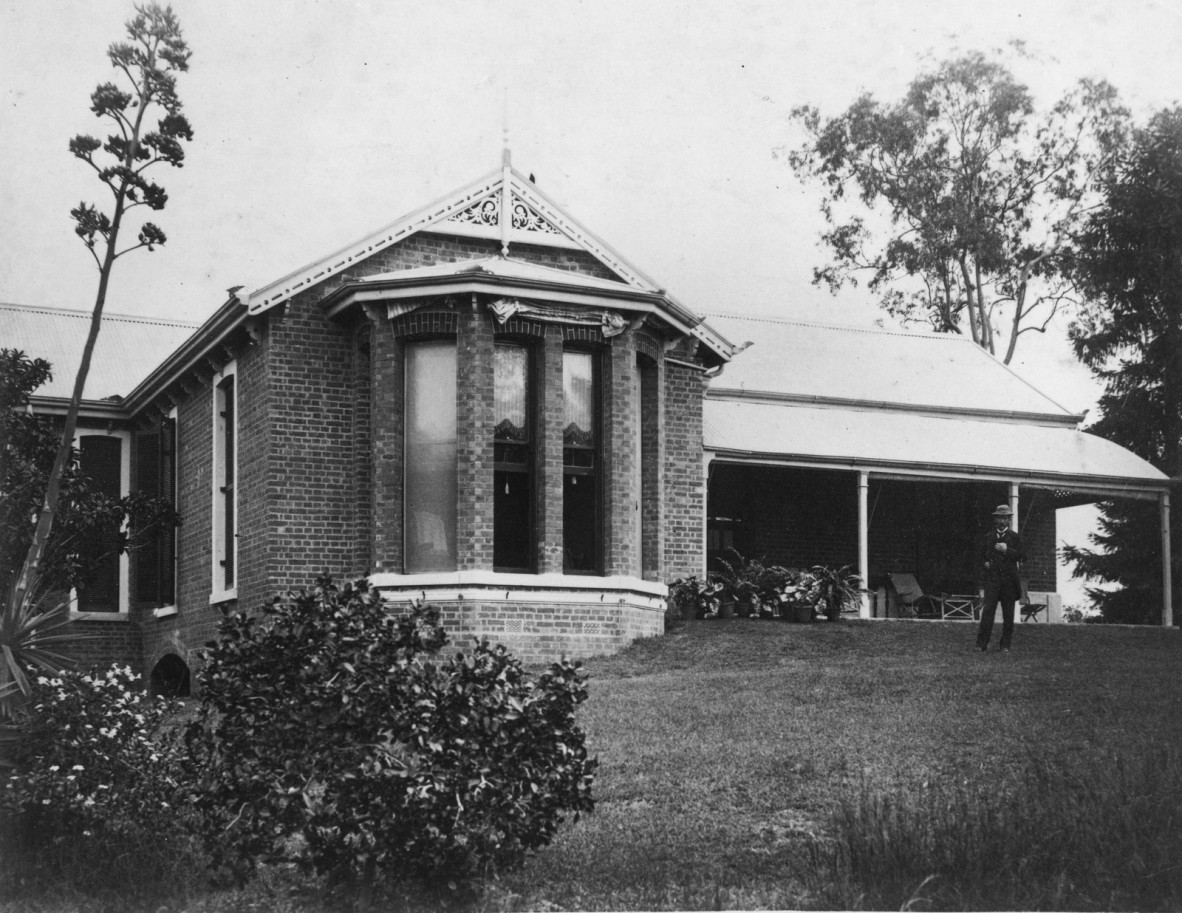
Baroona, a residence in Paddington, Brisbane, 1886, John Oxley Library, State Library
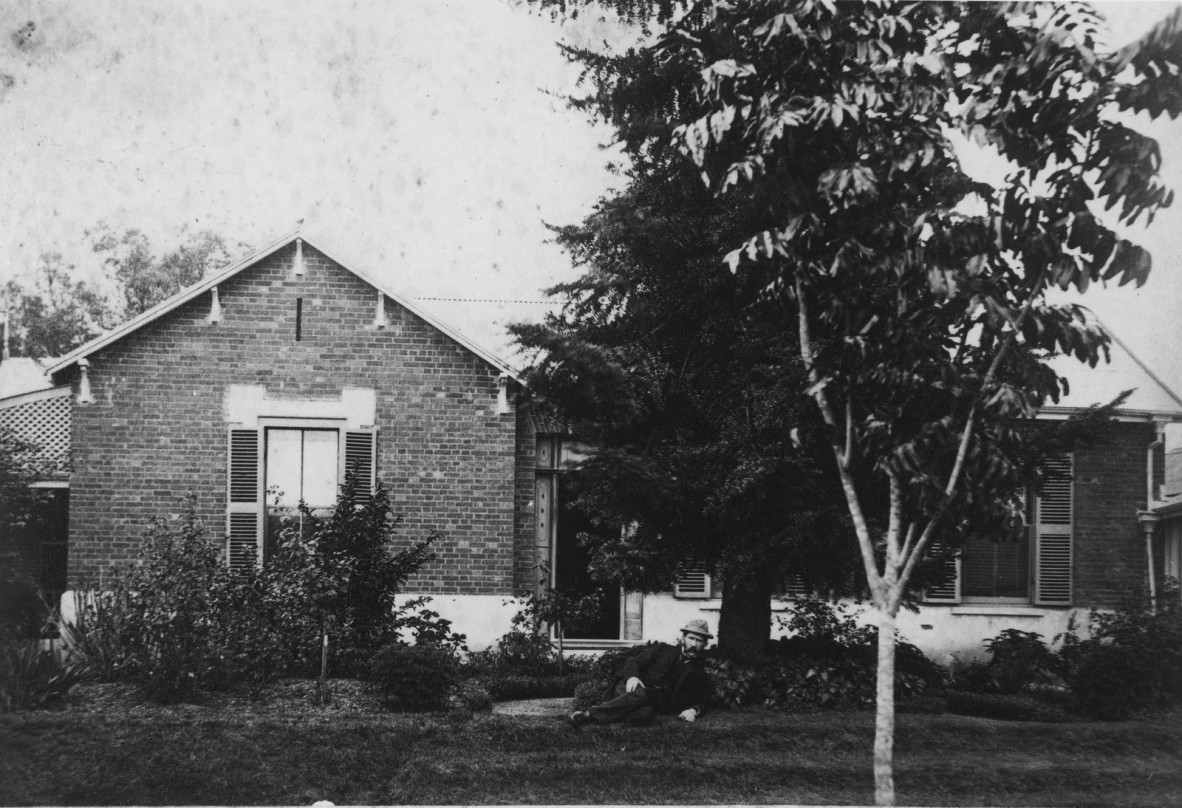
Baroona and gardens, Paddington, Brisbane, 1886, John Oxley Library, State Library of Queensland
William died in 1904 at age 63 after a period of declining health, and was buried at Cornelian Bay Cemetery in Tasmania.
The records in the Henry Box and Son collection, comprising a ledger and two receipt books, are both clear and rich in detail. The ledger, starting in 1869, holds monthly lists of stock, imports, and the prices of each individual good. Materials listed within include everything from American-made horse and buggy wheel axles to whale lamp oil, and a wide range of leather goods for horse riding and maintenance. The receipt books, covering the years 1884 and 1888 respectively, contain the names of every purchasing individual or business on each docket, as well as the date of purchase, the itemised materials, and their prices. One of the notable local businesses who purchased from Henry Box and Sons were the Benjamin Brothers, a Bulk Store located one block further down Edward Street, known for this iconic flood photograph of 1893.
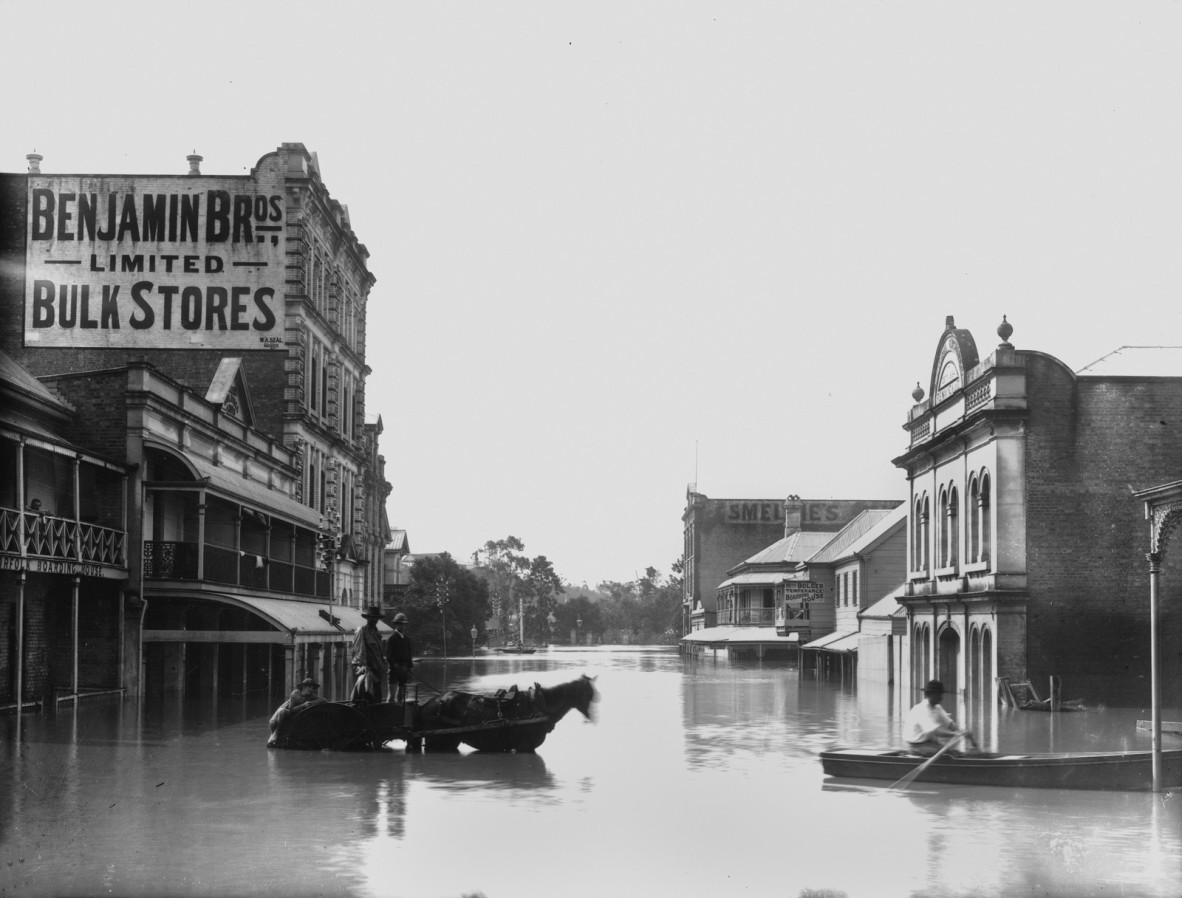
Intersection of Edward and Mary Streets during the floods in Brisbane, Queensland, 1893, P. C. Poulsen (Poul C.), 1857-1925. John Oxley Library, State Library of Queensland. Neg 123349.
This collection has survived over 150 years, and has suffered from decades of damage, including smoke, water, and mould. Access to these collections will be strictly limited due to their fragile nature.
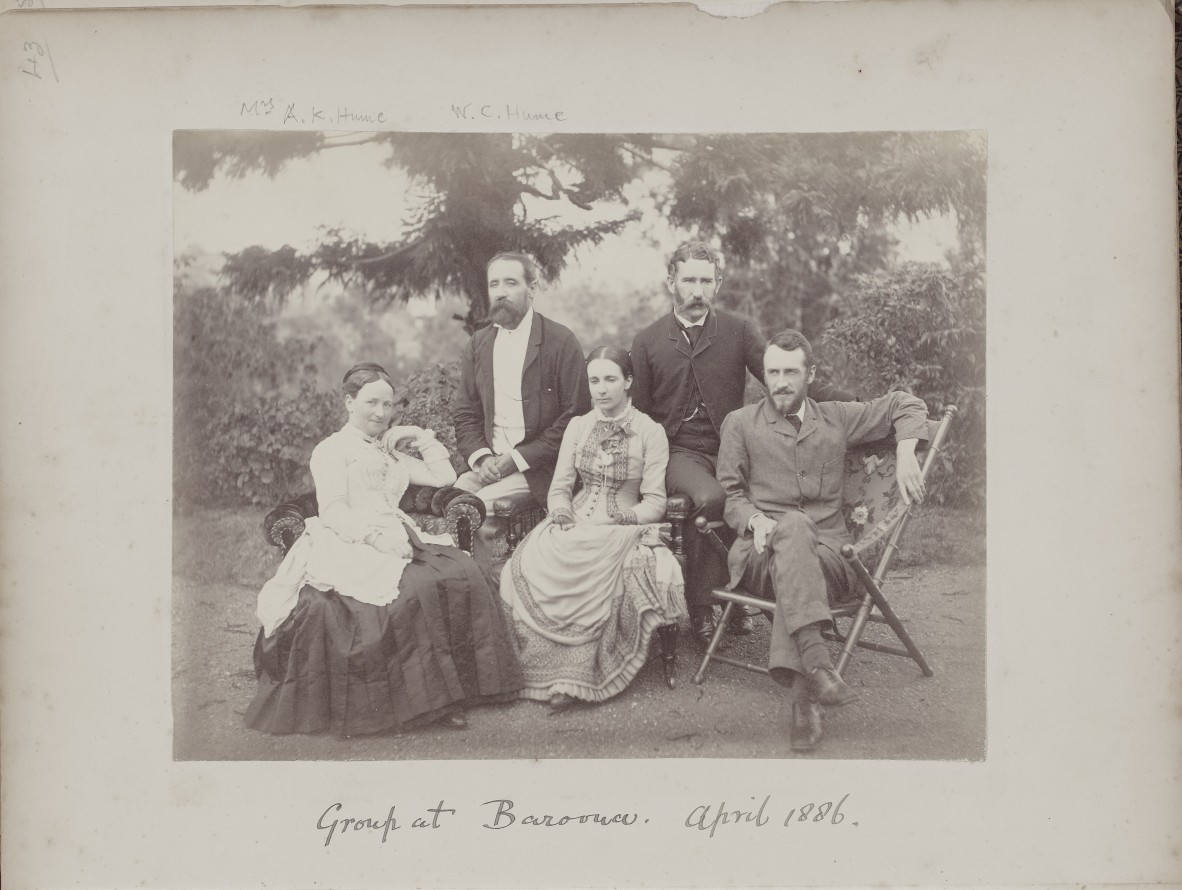
Mr Box back right - Courtesy of QLD Parliamentary Library photo
Comments
Your email address will not be published.
We welcome relevant, respectful comments.